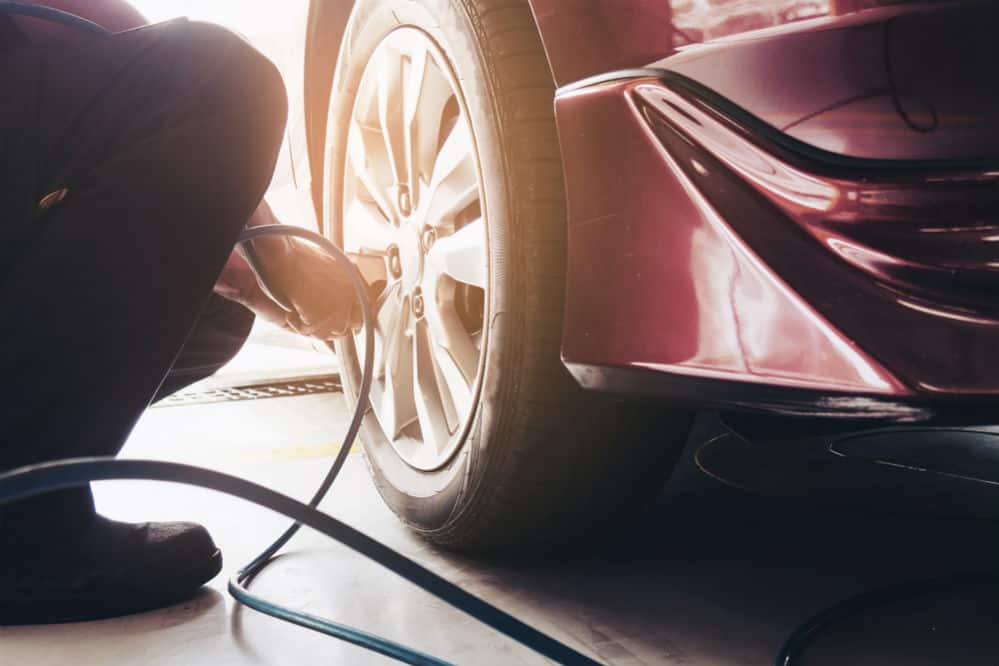As drivers, we are expected to maintain and care for our vehicles so that they can get us from point A to point B without having any troubles. One of the simplest things we can avoid is getting a flat tire, but the reality is that some people may have driven a car all their lives and are unaware of how to put air in a car tire. The reason you are reading this is that you are one of those persons.
Apart from learning to put air in a car tire, you ought to always check the pressure of your tires as failure to do this may be the cause of you getting a flat tire. Some people like to kick their tires to check its firmness, but the more vigilant way would be to purchase a tire gauge. This is amongst the most accurate ways to test the air pressure as air hoses may give you an inaccurate reading. If your pressure is low, you can add air to the tires at home or a service station using an air pump. At some service stations, though, air pumps are not free.
For you to learn how to put air in a car tire, read on below.
How to Put Air in a Car Tire: The Steps
There are several reasons why you should maintain appropriate air pressure in your tires. The main reasons are to prevent your tires from overheating, wearing, and blowing out. Your tires carry both you and your vehicle, so keeping them aired ensures that you have a safe and uneventful journey. If you are a driver, adding air to your tires without having to get assistance from anyone is one of the most basic things you should know.
- Test the Pressure
As mentioned, in order to test the pressure of the tire, a gauge must be used. A gauge can be purchased online or at an auto store. There is no need for you to get a fancy and expensive gauge as some persons tend to misplace gauges easily. That is because it is thin and does not weigh much. Nonetheless, you must also not get the cheapest one as it might have poor quality. The manual gauges have an extension that gets pushed out by the air in your tires when you attempt to test the tire while the digital one is a bit similar but may include a needle.
Before you even begin, get a pair of gloves to keep your hands clean. Also, before you check the air in your tires, it is recommended that you let your tires cool, or check them when they are cold. If you have to drive on a roadside, it should not be more than a minute’s drive. After which, you have to remove the metal valve stem from inside your wheel. If you are not sure what it is, it is usually a black or gold screw cap that is used to prevent air from being expelled from your tires, although some people do drive with their tires uncapped.
Once you locate it, remove the cap and attach the end of the gauge to the valve. You should hold it firmly (some gauges can be screwed on like the cap) and listen for the sound of rushing air. You should count a few seconds before removing the gauge and taking the reading. Don’t forget to replace the cap.
- Prepare to Pump
Check your tires every month as the weather can affect the tires pressure. Also, it is a good way to find leaks. Most tires take between 30 and 35 PSI (pounds per square inch). If you are really unsure of how much air to put, you should check the car’s manual. If there is none, there is a sticker on the side of the driver’s doorpost that should contain the valuable information that you need. If you still don’t find it, check the inside of the tire itself. If you still can’t locate it, Google should become your best friend as it makes it possible to find any type of information that you may need.
If you have to go to a service station to pump the gas, park your vehicle in such a way that the air hose will be able to reach all four tires. Then, remove the valve caps. Again, you should check the pressure because driving heats the tires. If the reading is different from what you got earlier, you should add the difference in the air that you have gotten from the first and second pressure reading of your tires. Completely ignore the second reading. If you plan to this at home, you don’t have to worry about overheated tires.
- Pump the Air
To pump air, connect the air hose to your tire’s valve using the same method that you did to connect the gauge. You would know that you have connected the two properly when air does not leak outside of the tire. Most air hoses have a pressure gauge, so you can set it before you start to pump so that when it reaches the desired pressure, it can alert you by using a beeping mechanism. If this is not available, add small bursts of air to your tires and test the pressure after these bursts. Add enough air until you reach your desired PSI.
If you have put too much air in the tire, you can correct this by pressing against the valve stem using the gauge. You will hear a small amount of air being released. Repeat the process of pumping air for the other three tires. You should be aware of whether the manufacturer has a different air pressure for your front and rear tires. However, if you hear air escaping, then you may need to change your flat tire as there is probably a hole somewhere.
Conclusion
Putting air in a tire is not rocket science and learning it is a must. If you feel that you will not be able to do it yourself, you can possibly beg for someone’s assistance. However, you should still let them show you what to do so that you will have the confidence the next time you need to do it.



Leave a comment